|
Displaying items by tag: world war II
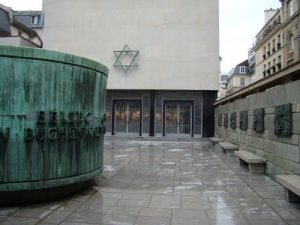
French senator Corinne Bouchoux is urging French museum officials to take closer looks at their prized holdings as many public art collections contain works looted by Nazis during World War II. Bouchoux has led an investigative committee devoted to uncovering Nazi-looted artwork in France, which prompted her to ask museums to be more thorough in their provenance research.
Bouchoux revealed that out of the 100,000 artworks stolen from Jewish families in France and Belgium, approximately 2,000 of those works were still present in French museums. Many of these museums were designated “national museums of recovery,” which allowed the institutions to keep the works as long as they did not become property of the state and if identified, the rightful owners could reclaim them.
Bouchoux wrote her doctoral thesis, which has just been published as a book, on Nazi-looted art in France and has suggested nine proposals to direct the stolen works back to their rightful owners or offer restitution for them.
In line with Bouchoux’s efforts, the Shoal Memorial in Paris presents the exhibition Looting of the Jews: A State Policy (1940-44), which grants visitors a glimpse of the goods, including artworks, that originally belonged to Jews in France. The show is on view through September 29, 2013.
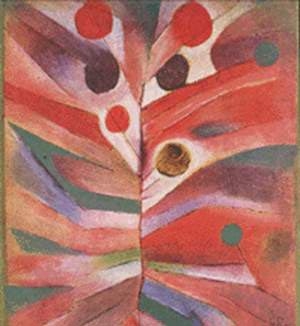
The heirs of Alfred Flechtheim, a prominent Jewish art dealer who fled Nazi Germany during World War II, are urging the German state of North-Rhine Westphalia to return artworks belonging to their relative. The paintings in question, which are by Paul Klee (1879-1940) and Juan Gris (1887-1927), are currently part of the Kunstsammlung Nordhein-Westfalen’s collection in Dusseldorf.
Before the perils of World War II took hold, Flechtheim was an established art dealer in Europe, representing a variety of well-known artists including Klee, Max Beckmann (1884-1950), and a number of French Cubists. Flechtheim ran galleries in Dusseldorf and Berlin, organized many exhibitions, and founded an art magazine. However, Flechtheim’s high standing in the art world made him an easy target for the Nazis. He fled Germany in 1933 shortly after a stream of hateful articles ran in the Nazi press. Flechtheim escaped to Zurich, then Paris before settling in London. After his getaway, Flechtheim’s Dusseldorf gallery was seized and turned over to his former employee Alex Voemel, a Nazi. Flechtheim’s gallery in Berlin was liquidated and his collection, which included works by Pierre-Auguste Renoir (1841-1919), Wassily Kandinsky (1866-1944), Fernand Leger (1881-1955), Georges Braque (1882-1963), and Henri Matisse (1869-1954), was sold.
Mike Hulton, Flechtheim’s great-nephew, claims that Klee’s Feather Plant (1919) and Gris’ Still Life (Violin and Inkwell) (1913) were part of Flechtheim’s private collection and sold under duress for well below their value when he fled Germany. The Kunstsammlung Nordhein-Westfalen does not believe there is enough evidence to support Hulton’s claim. In addition, owners of archives that could help in the case are refusing to let provenance researchers access their information, bringing the dispute to a standstill. Officials from the Kunstsammlung Nordhein-Westfalen assert that if it was proven that Flechtheim was forced to sell the works by Gris and Klee or that he received little to no money for them, that they would part with the paintings, but the current evidence is inconsequential.
Flechtheim’s heirs are currently pursuing restitution for over 100 paintings in museums in the United States, France, Germany, and other European countries.
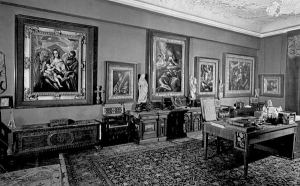
On January 23, 2013, a three-judge federal appellate court in California heard arguments from the heirs and relatives of a prominent Hungarian art collector. The lead plaintiff, David de Csepel, is the great-grandson of Jewish banker Baron Mór Lipót Herzog whose legendary art collection once included works by El Greco (1541-1614), Anthony van Dyck (1599-1641), Diego Velázquez (1599-1660), Pierre-Auguste Renoir (1841-1919), and Claude Monet (1840-1926).
The case, which could be the last major art restitution case relating to the Holocaust, involves 40 artworks valued at $100 million that were seized by Nazis during World War II. Csepel argued that Hungarian courts acted unjustly as they have never returned the stolen paintings nor paid restitution to Herzog’s relatives. In fact, a number of paintings once belonging to Herzog remain in the collections of Hungarian museums.
The lawsuit is attempting to use U.S. courts to press charges against the Hungarian government, three of the country’s museums, and a university. However, the Hungarian government’s lawyers argue that U.S. courts have no jurisdiction on foreign soil, pushing to have the case played out in Hungarian courts or the International Court of Justice. The plantiff’s attorney, Michael Shuster, claims that the case is relevant for U.S. courts because most of the living heirs involved in the case are U.S. citizens and that Hungarian courts can be problematic.
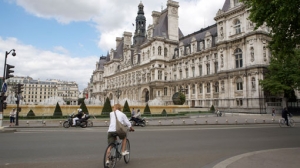
Next fall doors will open to Paris’ Parsons the New School for Design for the second time. Frank Alvah Parsons, who founded the New York School of Fine and Applied Art (now Parsons), initially opened a French branch in 1921. The Paris location closed temporarily during World War II and when Parson merged with the New School for Social Research in 1970, the Paris branch was included. The New York and Paris campuses continued to grow apart until their association was no more than a technical one. In 2010 the Paris institution changed its name to the Paris College of Art and the New School could return to Paris using the Parsons moniker.
The new campus will be announced on November 29 at the Palais de Tokyo. Located on the Rue Saint-Roch, the Paris School of Art and Design will accommodate 300 to 500 students, who will be able to begin their studies there or in New York. Parson also has associated campuses in Shanghai and Mumbai. The school will offer bachelor’s and master’s programs in multiple art disciplines, fashion, design, and business.
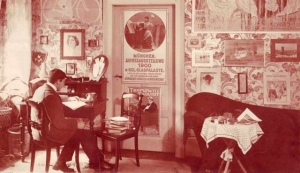
This past March, the highest court in Germany for civil affairs ordered that 4,300 pre-World War II posters looted by Nazis were to be returned to Peter Sachs, a retired airline pilot. Sachs is the son of Hans Sachs, a Jewish dentist who fled Germany in 1938 after being arrested by Nazis and sentenced to the Saschsenhausen concentration camp.
The poster collection, worth more than $5.8 million, was previously kept at The Deutsches Historisches Museum in Berlin. Sachs started his collection in the late 19th century at a young age and went on to publish a poster magazine called Das Plakat, found a society, and give lectures on the subject. Unique works by Henri de Toulouse-Lautrec, Ludwig Hohlwein, Lucian Bernhard, and Jules Cheret are included in the collection.
At the time of its confiscation, Sachs’ collection was the largest of its kind. When the Gestapo seized the posters in 1938, Sachs was told that Propaganda Minister Joseph Goebbels wanted the works for a new museum wing dedicated to “business” art. Sachs’ collection included advertisements for travel destinations and various products as well as propaganda and political posters.
When Sachs arrived in the U.S. with his wife and young son, he assumed that he would never see his collection again. In 1961 he accepted about $50,000 from the West German government, figuring the works had not survived the war. In 1966 when Sachs learned that some of his collection was still intact in East Berlin, he made contact with communist authorities in an attempt to get the posters loaned for exhibitions. He never succeeded.
After Sachs’ death, his son Peter fought a five-year legal battle for the return of his father’s posters after a government panel denied his claim in 2007. The court ultimately ruled that Sachs had never lost legal ownership of the post collection and that Peter, Sachs’ heir, had the right to possession.
Guernsey’s auction house will handle the collections’ sale in three intervals. The first auction is scheduled for January 18, 2013 and the second and third series will take place at six-month intervals. Guernsey’s hopes to find a single buyer for the collection and has been in talks with museums in Germany, Israel, and the U.S.
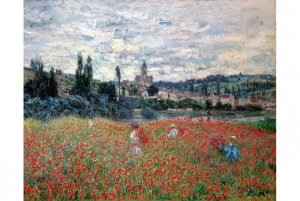
Juan Carlos Emden, the grandson of a wealthy Jewish businessman, is demanding that the Swiss Buehrle collection return a Claude Monet painting that the family was forced to sell as they fled Europe during World War II. The masterpiece was sold in haste for a little less than $32,000. The painting today is valued at around $27 million.
Emden is the Chilean grandson of Max Emden who bought Monet’s Poppy Field Near Vetheuil in the 1920s. Max was forced to flee Nazi Germany in 1933 for Ticino, Switzerland, where he built the Villa Emden to house his art collection, including Poppy Field Near Vetheuil, one of Monet’s most famous paintings. After his death in 1940, Emden’s son, Hans Eric Emden, was forced to sell his father’s art collection to finance his fleeing to South America from Europe.
Juan Carlos Emden is rumored to have been fighting for years to regain ownership of his grandfather’s painting and is planning to travel to Zurich to discuss how to recover the work with his lawyers. Poppy Field Near Vetheuil was stolen during a heist at the Buehrle museum in 2008, but it was found several days later.
Uzbekistan seems an unlikely venue for a rare Pablo Picasso exhibition, but Tashkent’s State Arts Museum currently has 12 “forgotten” ceramics by the artist on view. The works were first exhibited in Tashkent in the 1960s and have remained in storage since then. While it is not clear why the pieces have remained out of sight for so long, some suggest that they may have been forgotten.
Uzbekistan is known for its own pottery and ceramics industry and is well known for its art collection as it has long been used by wealthy Russians to house valuable artworks, many of which were taken there during World War II for safe keeping.
The French painter and close friend of Picasso, Fernand Leger, and his wife, Nadya, originally owned the 12 ceramic pieces. When Leger died in 1955, Nadya decided to donate the works to museums in the former Soviet Union.
While most people associate Picasso with his paintings and drawings, he produced more than 2,000 ceramic pieces between 1947 and 1948.
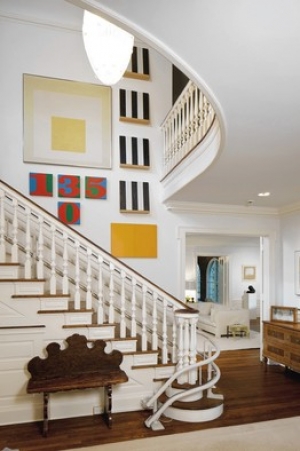
Starting in the 1950s, Rudolph and Hannelore Schulhof began building a 20th century art collection that has become the source of much speculation after the widowed Hannelore died this past February. Boasting nearly 350 works in total, Christie’s will auction 63 pieces from the collection including works by Joan Miro, Ellsworth Kelly, and Robert Indiana as part of its Impressionist and Modern Art Works sale and its Post-War and Contemporary Art sale in November. The sale is expected to bring in about $25 million. Christie’s will open the doors to the Schulhof’s Long Island mansion on Saturday, September 21 and Sunday, September 22 from 10AM to 5PM. Visitors will get a glimpse of an extraordinary, museum-quality collection. In fact, 100 of the works had previously been promised to three museums including the Peggy Guggenheim Collection in Venice as well as the Israeli Museum in Jerusalem and the Whitney Museum of American Art in New York.
The Sculhofs met in Vienna right before the start of World War II and married in Brussels in 1940. After traveling to the United States with extended family, Rudolph launched what would become a fine art reproduction company. When the couple first started collecting they tended to go after established names but were cajoled by the art dealer, Justin Thannhauser, to consider the art of their own time. As the Schulhof’s company had an office in Milan, they would frequent the city’s galleries as well as the Venice Biennale on their visits to Italy. It was on one of these trips that the Schulofs met the prominent American art collector, Peggy Guggenheim. A longtime friendship ensued, resulting in rapports with the artists themselves and the couple’s generous posthumous gift of 83 works to Guggenheim’s Venice institution. Another 200 artworks will remain in the Schulhof’s home and the family will decide on distribution in the future.
|
|
|
|
|